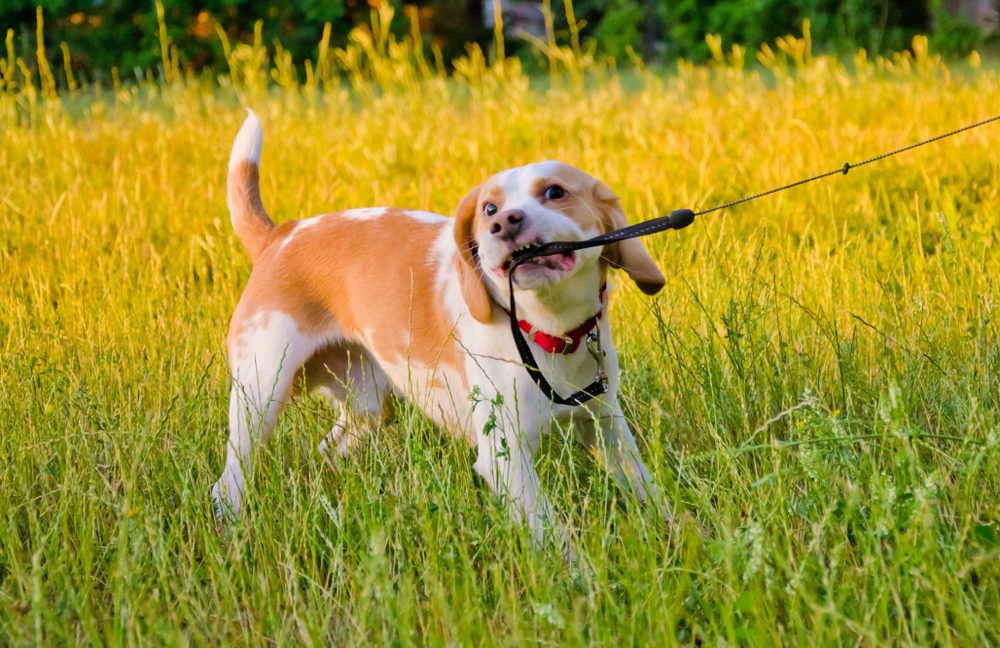Some pups love nothing more than pleasing their owner. They’ll be patient, listen and follow commands even without the bribery of treats. Others, however, seem to love anything but pleasing their pup parent. Instead, their main goal is to please themselves; they treat the couch as their throne, refuse to come when called unless offered a platter of their favorite food, and turn the hours after midnight into their own personal karaoke night – barks, howls, yaps, and more.
Frankly, some breeds are notoriously difficult to manage and train. These pups will give any first-time dog owner a run for their money and are best suited to experienced owners. While you may have your heart set on a particular breed, it’s important to factor in how trainable the breed is and if you’re truly equipped to handle them.
Below, we’ve compiled a list of the top ten hardest dogs to train and manage. We’ve also gone over exactly what makes them more “challenging” than other breeds, so you can determine if you’d be the right owner for them.
The Top 10 Hardest Dogs to Train
Afghan hounds, Siberian huskies, bulldogs – there are several dog breeds infamous for their “lack” of trainability, despite their lovable nature at heart.
Afghan Hound
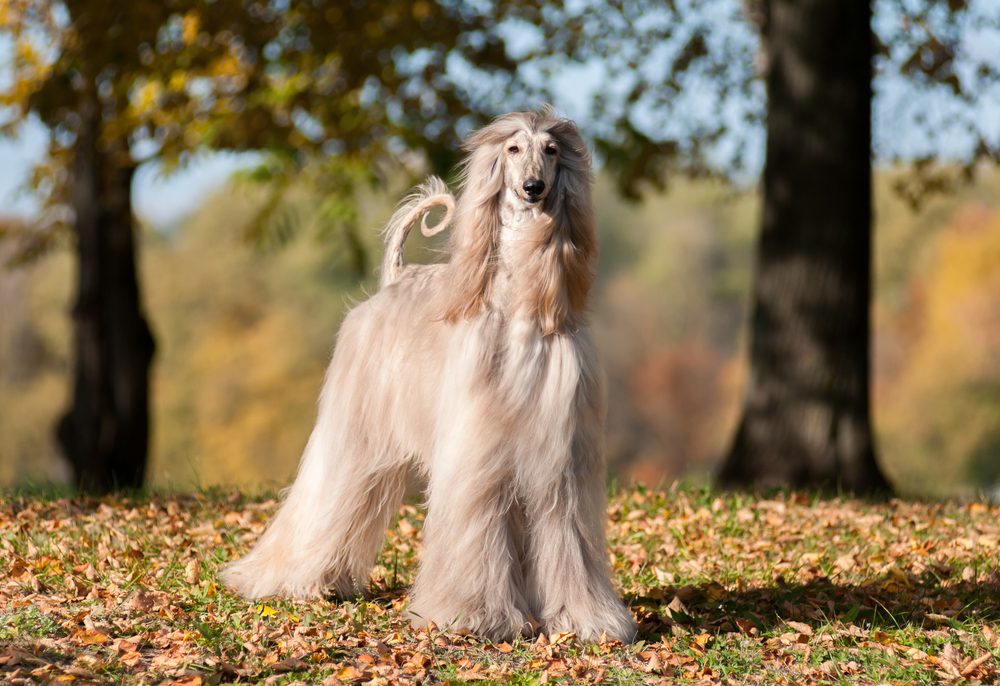


Dignified and sophisticated, a strong stature, elegant in looks – Afghan hounds are an ancient breed that are the “royals” of the dog world. While they have a noble heart and will serve their kingdom (aka you and your home) with utmost loyalty, they are renowned for having a will of their own.
They are individualistic to the point of stubbornness, and at times they can be extremely aloof, making it hard to grasp and maintain their attention. These aspects make training – which requires a dog’s willingness and undivided focus – a heck of a challenge.
Another reason why the Afghan hound isn’t the easiest to train is because of their high prey drive. Although not impossible, it’s extremely difficult to train them out of their desire to chase. Plus, since they are agile and lightning-fast (around the speed of a purebred racehorse!), you’ll need more than an assertive voice to reign them in, so you’ll have to have fast reactions and be able to have a strong hold over them.
Their never-ending loyalty can also be a double-edged sword; Afghan hounds struggle to adjust to new places and new people. They won’t take kindly to strangers and will typically be standoffish toward them. Plenty of socialization and training must be done to help them become accustomed to other people and environments.
Siberian Husky



Huskies are demanding, strong-willed and stubborn, making training them anything but a walk in the park. Siberian huskies are also one of the highest energy dogs out there, no doubt due to the fact that the breed was developed to be sled dogs capable of traversing long distances. They need heaps of exercise and mental stimulation. Otherwise, they’ll find more “unsavory” ways of exhausting their energy and relieving their boredom (i.e., chewing through your newly-bought rug…).
Another thing worth noting is that if Houdini was a pooch, he’d be a Siberian Husky; these dogs are notorious escape artists. They require plenty of dedicated training and a secure environment to keep their escapades in check.
If you’re not a fan of noise, be aware that huskies are extremely vocal dogs. They love the sound of their own voice and aren’t afraid to express their feelings to the world, whether through whines, chirps, or howls. Training a husky to keep their voice down can prove challenging, especially for first-time dog owners. Often, because of their stubborn streak, trying to get them to be quiet can actually spur them to make more noise!
Bulldog
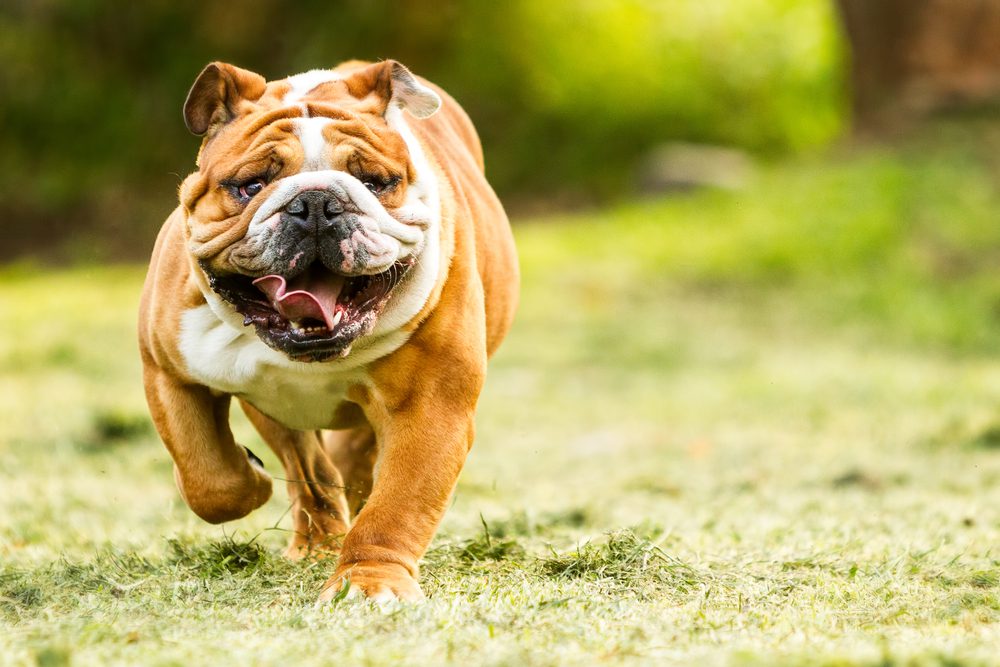


Lovable, laidback, and gentle, bulldogs are a far cry from what their name implies. That said, they do share some traits with a bull – they can be exceptionally stubborn, and they won’t budge a muscle if they’re not interested in what you want them to do.
Even if their stubbornness doesn’t get in the way of their training, they tend to be slow learners; they aren’t the smartest dogs out there, and they have a low work ethic. If you’re hoping to train a bulldog, patience and repetition is a must.
Bulldogs can also be territorial and extremely protective of their family. While this quality makes them loyal companions and ideal guard dogs, training them not to be on guard can take much more time and dedication than other breeds.
Basenji



Up next on our list is one of the oldest dog breeds: basenjis. Basenjis are hunting dogs famous for their intelligence, adaptability, and lack of “doggy smell.” They’ve often been compared to cats due to their love for keeping themselves well-groomed. Basenjis also aren’t as noisy as other breeds. They are nicknamed the “barkless dog” since they never bark, and the occasional times they do make noise, it’s a unique yodel-like sound.
While on paper, basenjis may sound like the perfect companion for those who want a pooch without the unpleasant “doggy” traits, the breed does have its own share of challenges, especially when it comes to training.
Although intelligent, basenjis are exceptionally independent-minded. Their desire to please is nonexistent; while they can pick up tricks and commands in a breeze, they won’t be at your every beck and call. They might decide to follow commands one day and then ignore you completely the next. Basenjis know exactly what you want them to do – they’re just not interested.
Moreover, if basenjis were the incarnation of a Norse god, they’d be Loki. In other words, they have a taste for mischief and aren’t afraid to “manipulate” their owners into giving in to their wants. They require a pup parent that can be firm and hold their ground.
Bullmastiff



Bullmastiffs are tough-looking, slobbering dogs laid back in the home but gutsy and determined at work. They are gentle giants at heart and love nothing more than pleasing their owners.
Although bullmastiffs are people pleasers, they aren’t dog pleasers whatsoever and have high guarding instincts. They require more training and socialization than other breeds to help them feel at ease around other dogs and strangers.
Bullmastiffs also like to do things their own way, a trait which coupled with their strong build and large size can make it impossible to get them to do what you want. Therefore, they need a confident, strong-willed owner to match their equally strong-willed nature.
Basset Hound
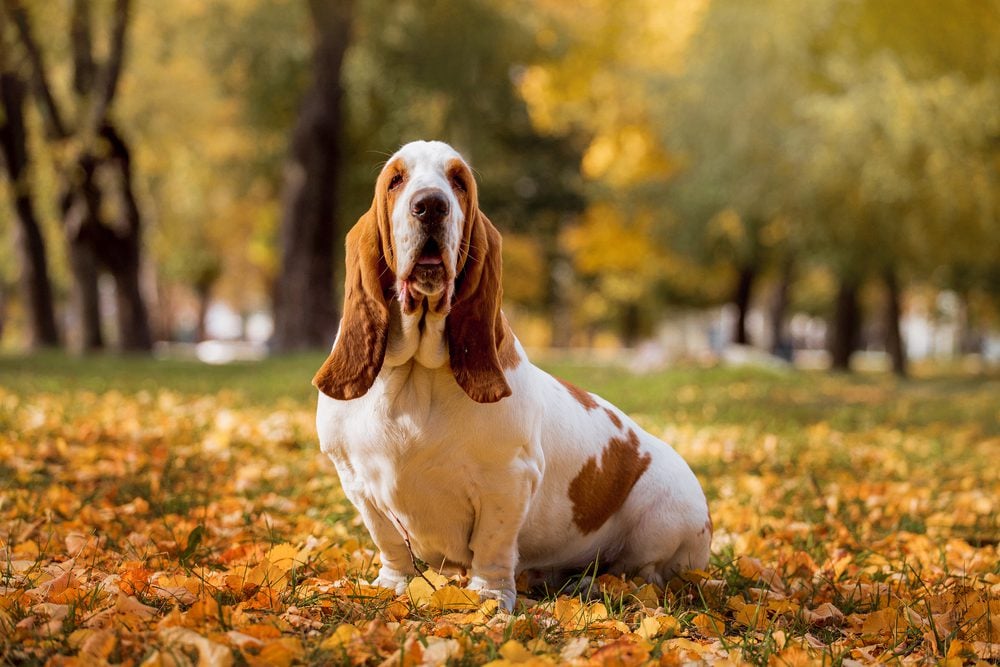


Basset hounds are famous for their easygoing demeanor, so if you’ve never personally owned one, you’re probably wondering how they’ve taken up a spot on our list. However, any pup parent of a basset hound will know exactly why they’re a top contender for the hardest dog to train; they’re slow learners and one of the most difficult breeds to housebreak.
These sniffer dogs also get easily distracted by scents and tend to listen to their nose more than their owner – that is, of course, unless you’re wafting the smell of a bag of treats their way!
Chow Chow



This blue-tongued bear-like pooch may look like a giant teddy bear, but without effective socialization and training, they’ll be more akin to a feisty grizzly than a teddy bear. They aren’t eager to please their owners, so they tend to be headstrong. They also have a dominating personality and will take on the “leader” role in an instant if they feel their owners aren’t fit for the bill.
With the right owner and appropriate training, however, a Chow Chow makes for a loyal and compassionate companion, and they’ll certainly give the best hugs you could ever imagine!
Chihuahua
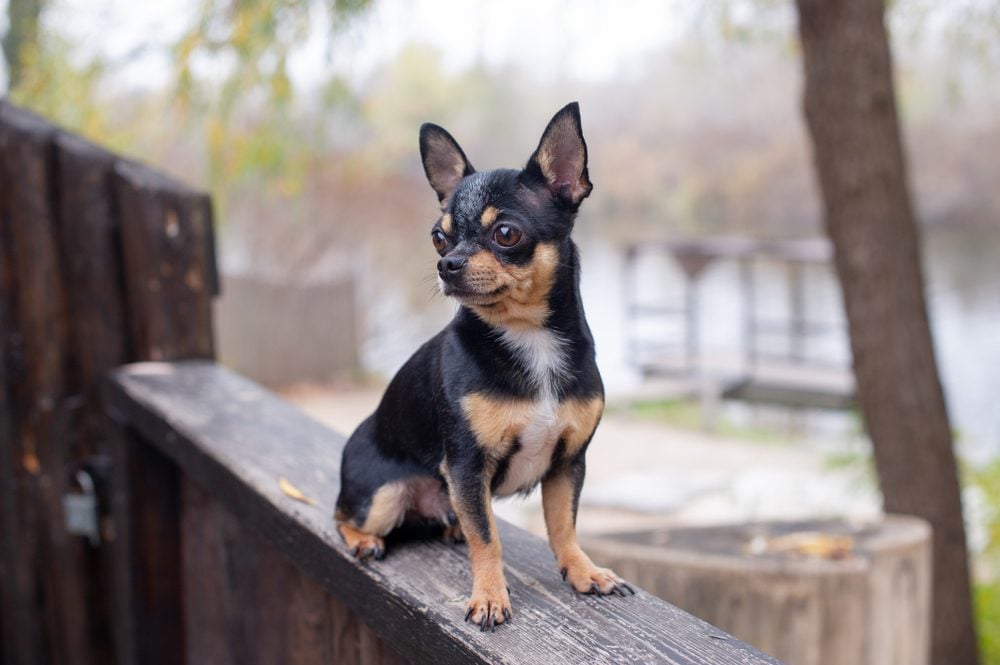


Chihuahuas may be the smallest dog breed in the world, but their attitude is probably the biggest out there; they’re not afraid to act out or try any means to get what they want, so they need an assertive owner that can take charge. Unfortunately, just like basset hounds, Chihuahuas are notoriously difficult to housebreak. Persistence and consistency are critical when training a Chihuahua.
Keep in mind that Chihuahuas also have a bad habit of forgetting just how small they actually are; they won’t hesitate to challenge dogs twice their size, something which can be detrimental if they challenge the wrong big dog. For this reason, they require dedicated training to reign in their larger-than-life attitude.
Rottweiler



Rottweilers are the opposite of Chihuahuas: they are muscular, giant dogs that are totally convinced they’re tiny lapdogs. They love nothing more than cuddles and belly rubs, and they’re utterly goofy at heart.
Although Rottweilers are big softies in the comfort of their home, they are highly territorial, which can make them aggressive toward others, a behavior that will need to be managed through consistent socialization and training.
To top it off, Rottweilers are highly sensitive dogs. They take to heart any frustration or impatience you exhibit while training and are prone to separation anxiety. They need a confident owner that’s not only able to stay calm but also willing to put in the time and effort to help them overcome their fears.
Chinese Shar-Pei
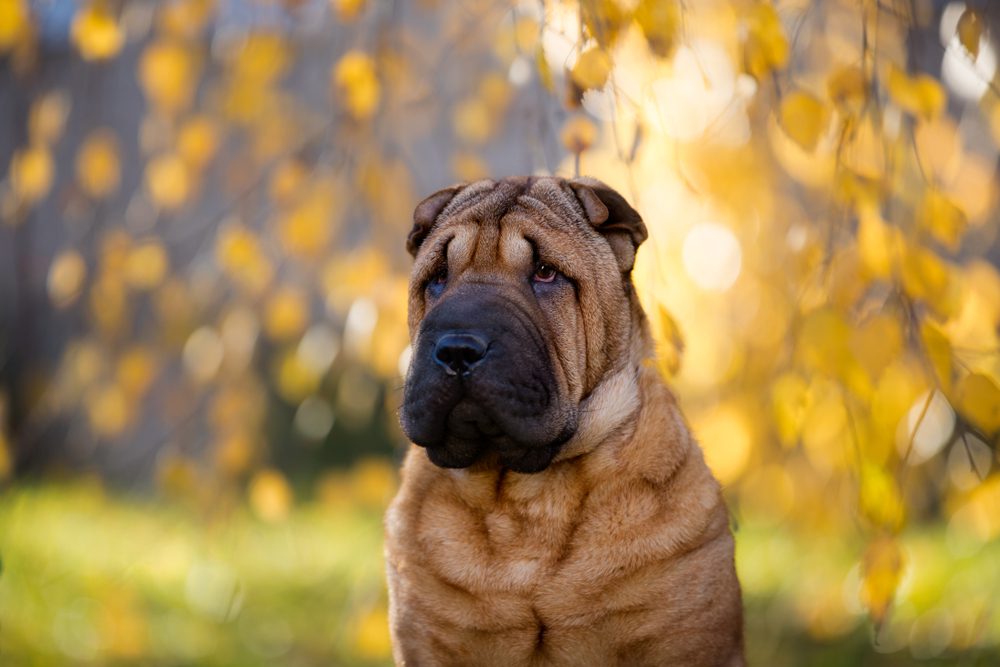


An American Kennel Club (AKC) expert on the breed has this to say about the Chinese Shar-Pei: “Get a jump-start on basic obedience, and don’t let [this] dog be the boss!” Truly, this statement couldn’t be more apt; Shar-Peis are smart and devoted dogs, but their independent thinking and love of doing things at their own pace can make training them a constant battle. They will take on a dominant role if given the opportunity.
Keep in mind Shar-Peis are protective by nature. In the care of an ill-equipped owner, they can become too overprotective, which can lead them to act out aggressively toward strangers. They need a determined owner who has experience dealing with strong-willed pups or is dedicated to learning the ins and outs of how to train and socialize them.
Training One of the Hardest Dogs to Train: General Tips and Tricks
A common misconception is that if a breed is considered difficult to train, it’s because they’re not smart. However, as our list above will prove, a lack of intelligence is rarely the cause behind their lack of trainability. In reality, it’s usually because they simply have a stubborn nature.
Below, we’ll cover some general training tips to keep in mind when working with a stubborn-minded pup.
Patience, Patience, Patience
Patience is critical when dealing with a challenging dog; take it slow and steady, and never give up, even if they seem to be grasping anything but the command you’re trying to teach them. Try out various methods and see what works best for your pup. We guarantee all your efforts will pay off.
Make sure to also reward your furry friend tons during training. The more you reinforce that training is a good experience, the more inclined they’ll be to join in.
Never Resort to Punishment
Training can be frustrating, but harsh corrections and aversives are not the way to get your pup to listen to you. Punishing your furry friend can destroy the bond you both share, as well as cause them to become fearful around you. It can even make them more prone to destructive behavior and aggression. For dogs, especially challenging dogs, the best approach is always positive reinforcement.
Determine Their Favorite Reward
Many of the pups featured on this list aren’t exactly eager to please their owners. They probably won’t pay attention and listen to you unless you have something they seriously want. Determine what your furry companion wants the most, and use it to your advantage. If you’re struggling to figure out what your dog likes the most, chicken is always a safe bet!
Have a Structured Routine
A structured routine will make your dog feel more at ease, which in turn will make them more inclined to listen to you throughout the day. Keep abrupt changes to their day-to-day life as minimal as possible.
Further Reading
Below, we’ve listed some further training resources for you to explore.
- AKC’s guide on puppy socialization and all their training guides.
- Dog trainer Zak George’s video guide on dealing with a stubborn dog.
- PetMD’s training and behavioral
- PetMag’s guide on dealing with dog aggression.
- Puppy Behavior and Training Basics, guide by VCA.
- The ten training mistakes to avoid, according to Modern Dog magazine.
- Vetstreet’s 7 strategies for training a stubborn dog.
Seeking Professional Guidance
Stubborn breeds will respond better to training during puppyhood, making effective training during this period of their life essential. For this reason, we strongly advise you to seek professional help and guidance from the get-go if you’re inexperienced, not just when the going gets tough.
Professionals can also help ensure you’re effectively socializing your pup. According to the American Veterinary Society of Animal Behavior, the number one cause of behavioral problems is improper socialization. Since many of these breeds are prone to
aggression or other behavioral issues, it makes proper socialization even more critical.
Final Thoughts
While these breeds are renowned for being the hardest dogs to train, don’t forget that there is no untrainable pup – the breeds listed above just require more dedication, patience, and perseverance. As long as you know what to expect, are able to meet their needs, and are equipped with the right knowledge, any “difficult” breed can make for a loyal and loving friend. Plus, training a stubborn dog can actually prove a heck of a lot more rewarding!
